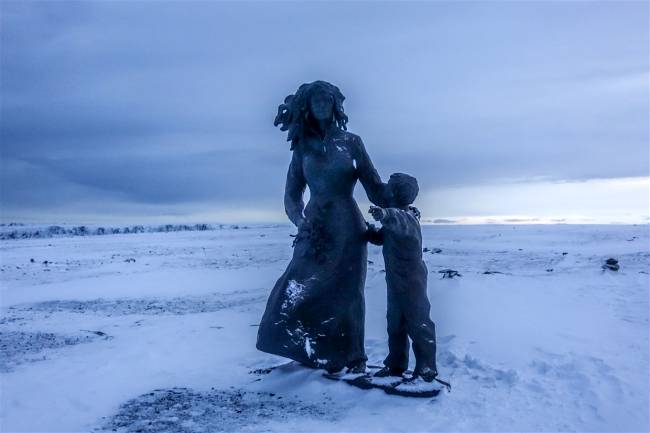


a work in progress.....
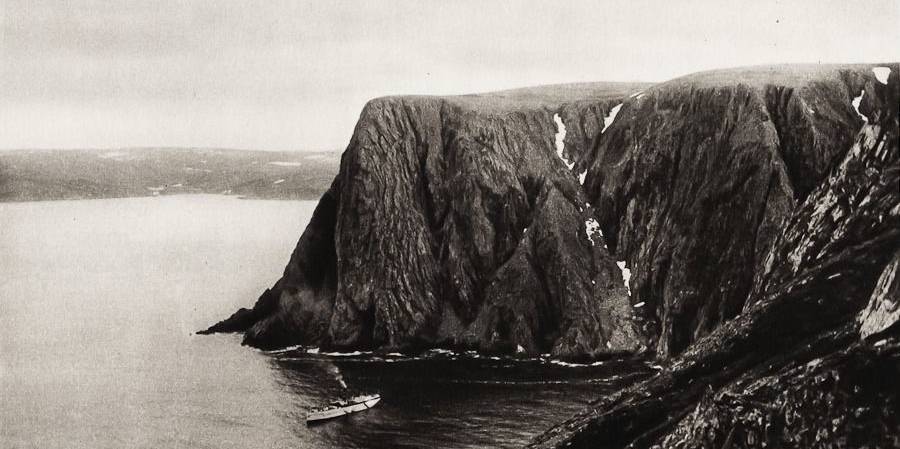
North Cape has attracted visitors for several hundred years, but it was the advent of cruising in the late 19th Century, that really put it on the map..
At first, cruising was very much for the upper classes. People were interested in sailing for pleasure, but you had to have money and time to spare.
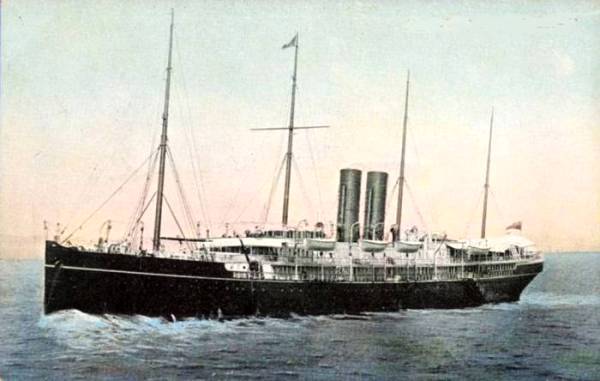
P&O’s first full time cruise ship, Vectis, entered service in 1904, and after cruising was recommended in the British Medical Journal for its health benefits, thousands of people signed up to see the world.
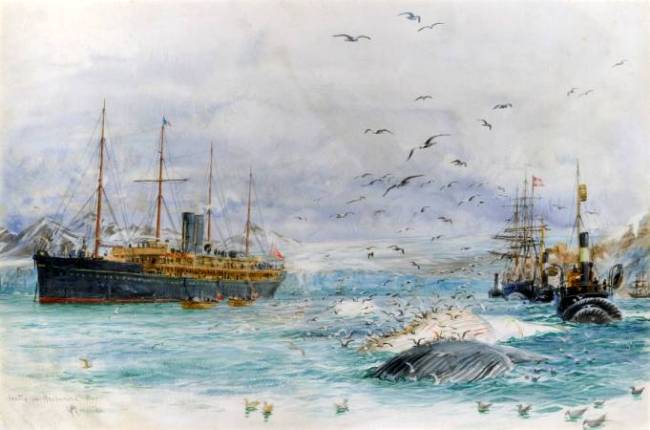
Vectis anchored in Recherche Bay on the west coast of Spitsbergen.
Renamed and extensively
refitted,
the stylish Vectis carried 150 passengers in first class accommodation, on
cruises to

'Our ship steams steadily on, and it would seem as though there is no end to the labyrinth of ice-worn rocky islets...' Marion Wyllie, Norway and its Fjords.
Magerø is a large island in Finnmark county, in the extreme northern part of Norway. The island lies along the Barents Sea in the Nordkapp Municipality, just north of the Porsanger Peninsula. The mouth of Porsangerfjorden lies off the east coast of the island.
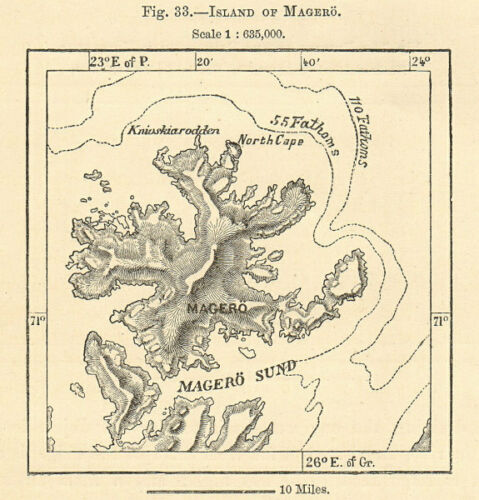
Magerøya has an area of 168.6 sq miles and the highest elevation on the island is the 1,368 ft mountain, Gråkallfjellet. The most northern point on the island is also the northernmost point in Norway: Knivskjellodden. The island features a bleak, barren, tundra-covered landscape devoid of any trees - except for a few small pockets of mountain birch, with steep cliffs along the coast, and dramatic mountainscapes in the interior. On southern Magerøya, archaeologists have found evidence of settlements dating back over 10,000 years.
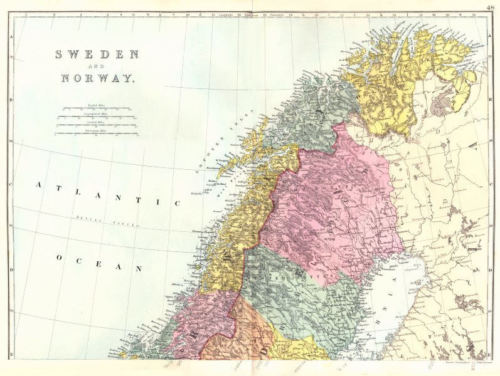
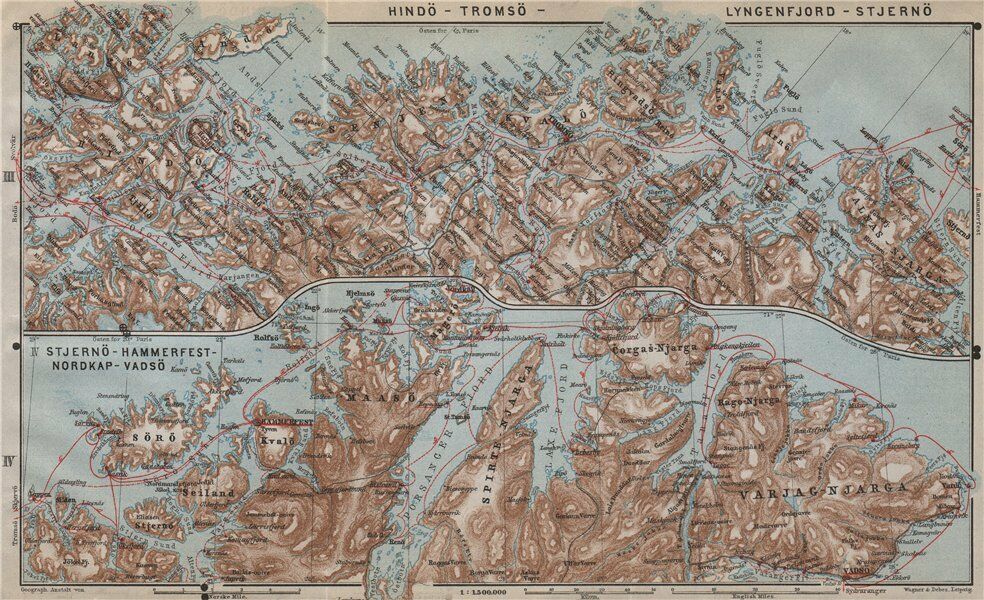
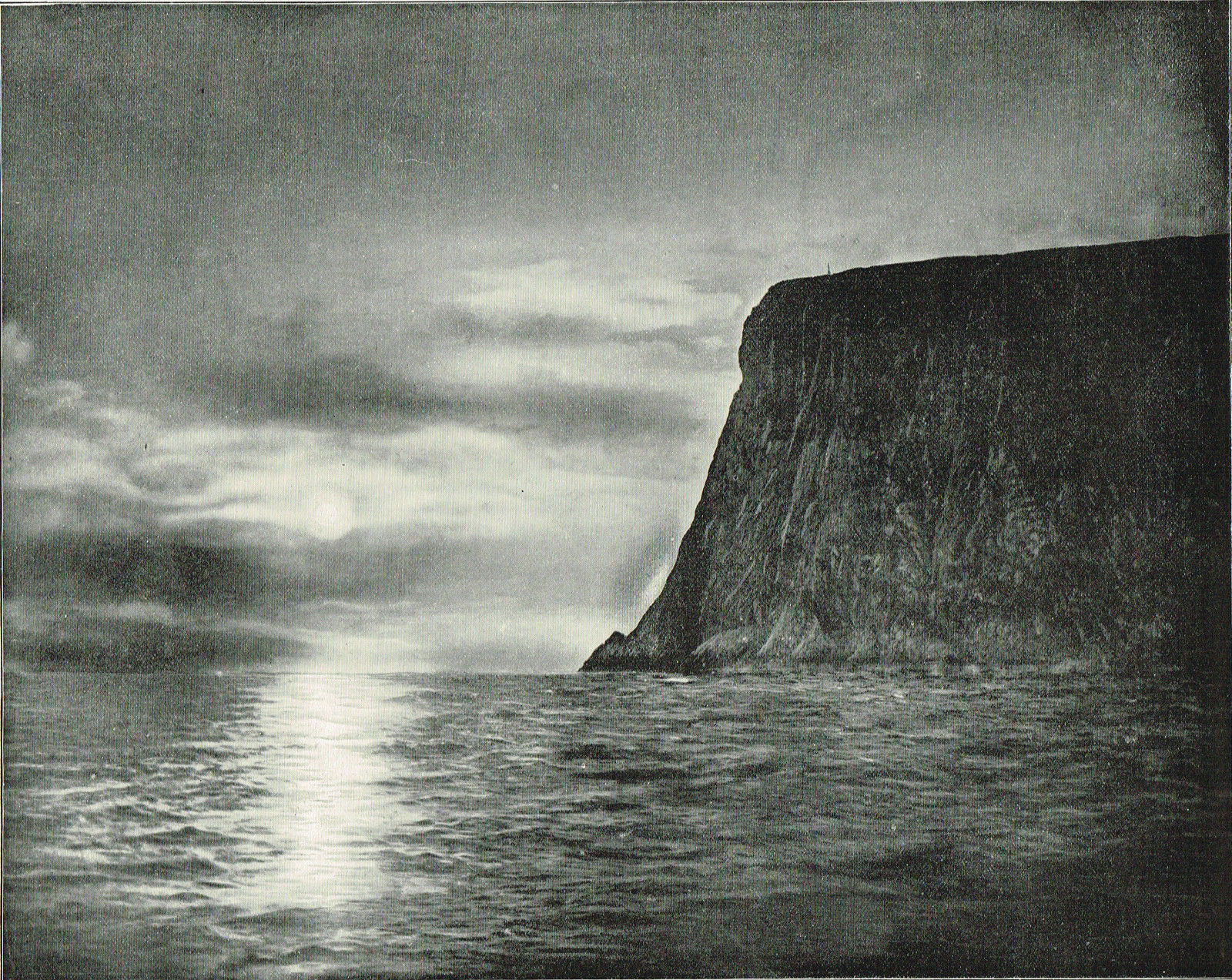
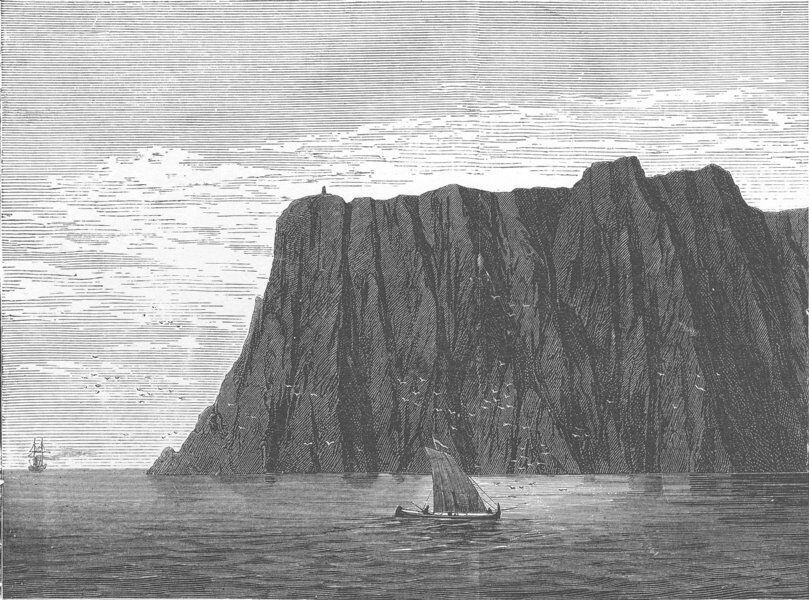
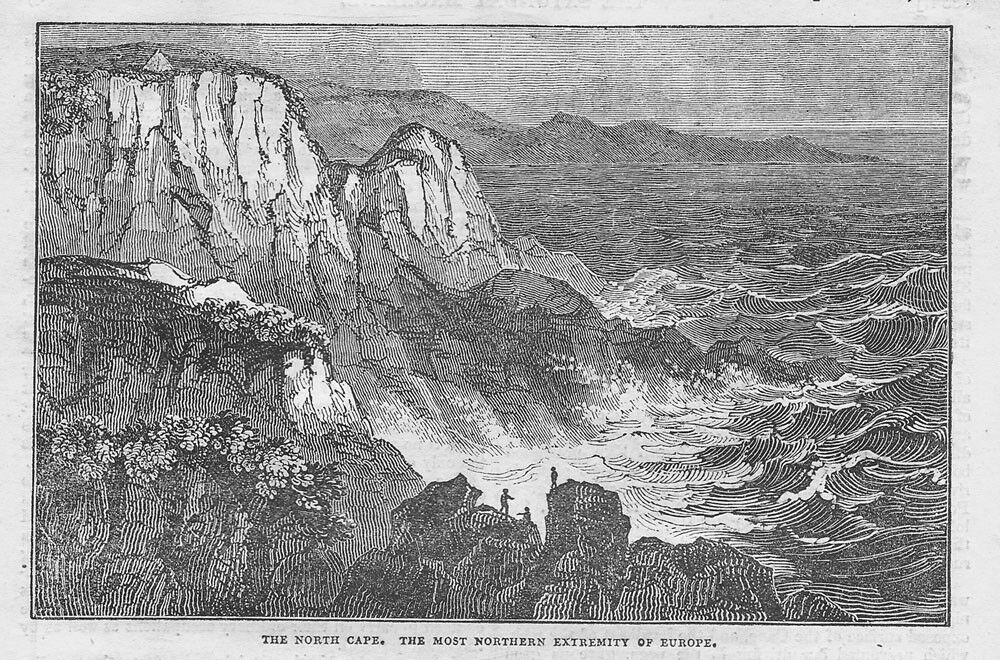
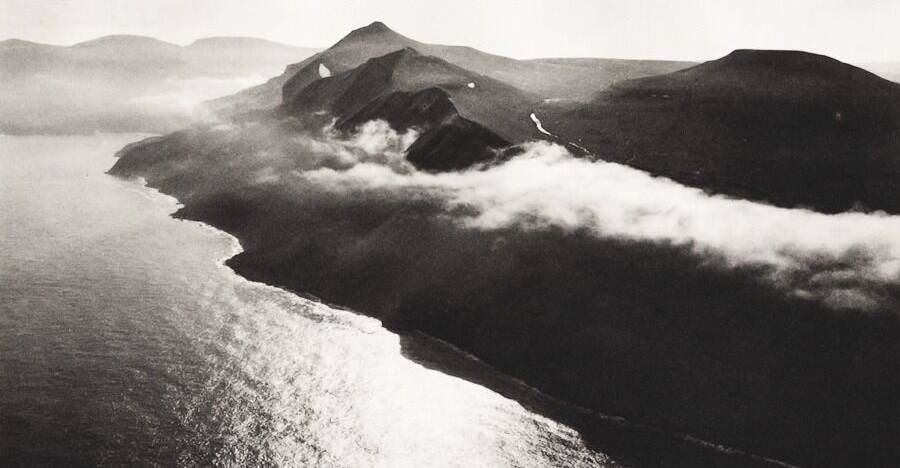
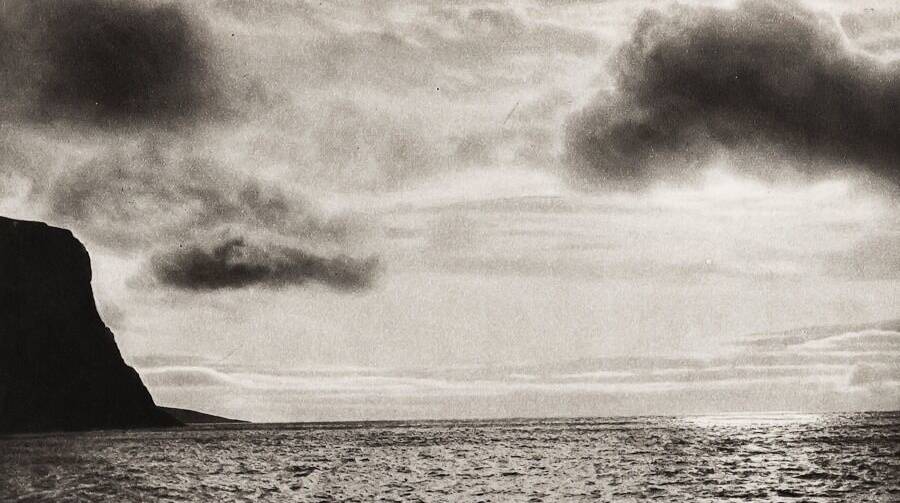
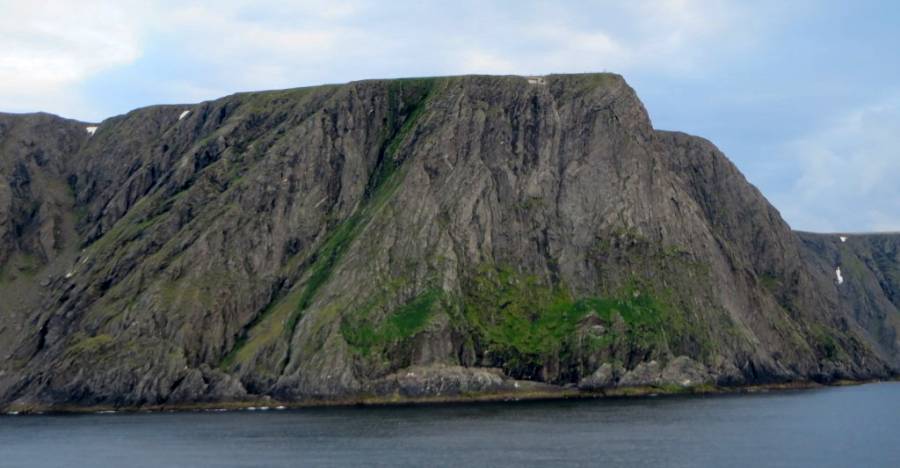
Saami Reindeer Herders
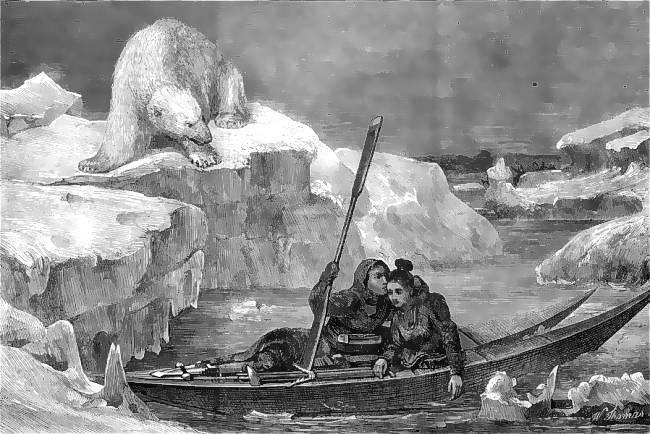
The Sámi people (also spelled Saami) are a Finno-Ugric people inhabiting Sápmi, which today encompasses large northern parts of Norway and Sweden, northern parts of Finland, and the Murmansk Oblast of Russia.
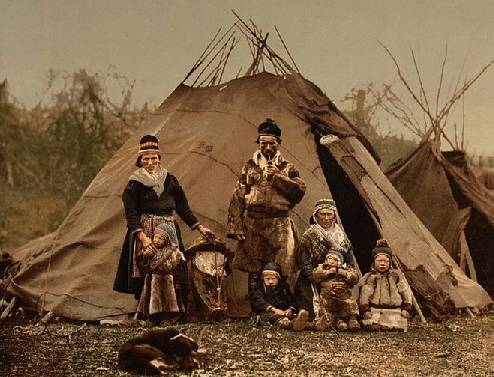
Each June, after a long journey into the mountainous tundra of northern Norway, the Sámi families wait for their herds in tepee-like structures called lávut. They will spend sleepless nights marking the calves before moving the reindeer to their summer grazing grounds in the fjords.
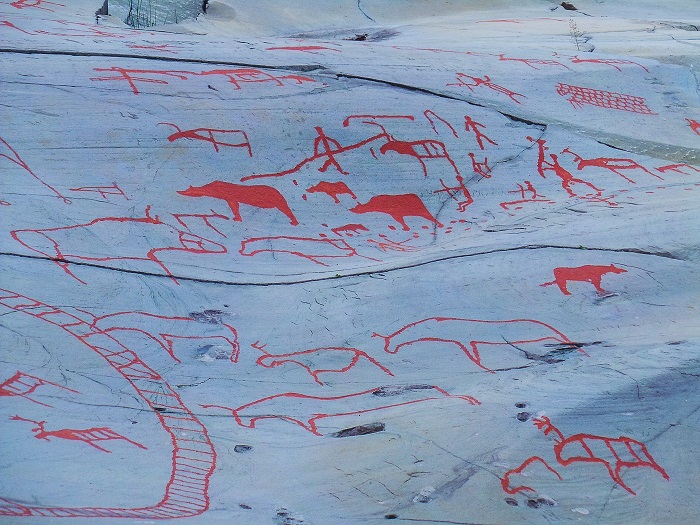
And can be traced right back to pre-historic times.
Sámi ancestors lived along the coast of the Arctic ocean in northern Norway 10,000 years ago. Later evidence of human settlement has been found all-over Sápmi.
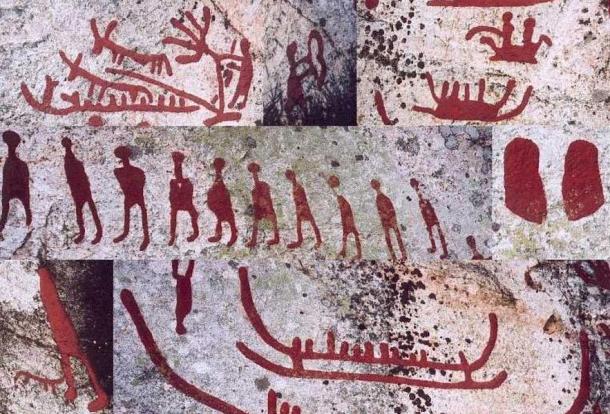
The oldest document regarding the Sámi people is dated to 98 AD by the Roman historian Tacitus , in which they are referred to as the fenni hunting people in the far north.
He wrote that they wore fur clothes, travelled on skis , and hunted reindeer.
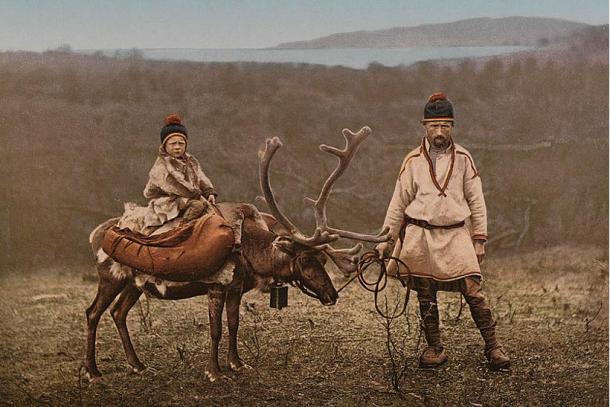
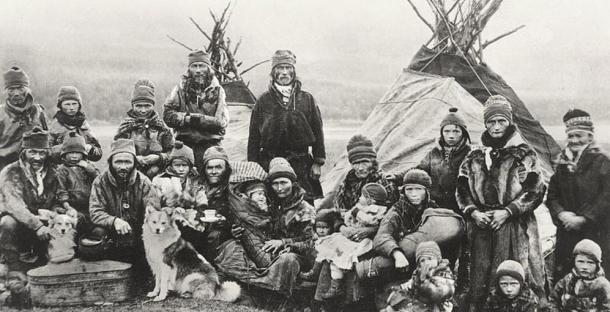
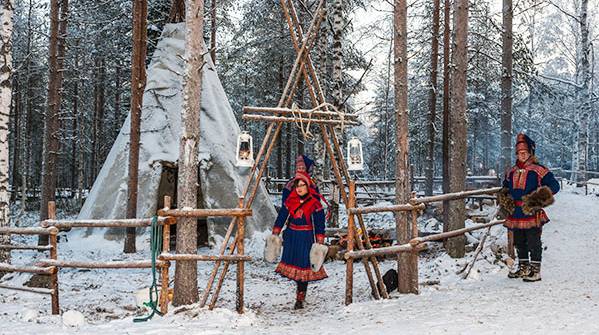
It is a remarkable, traditional way of life that has survived the passing of the centuries.
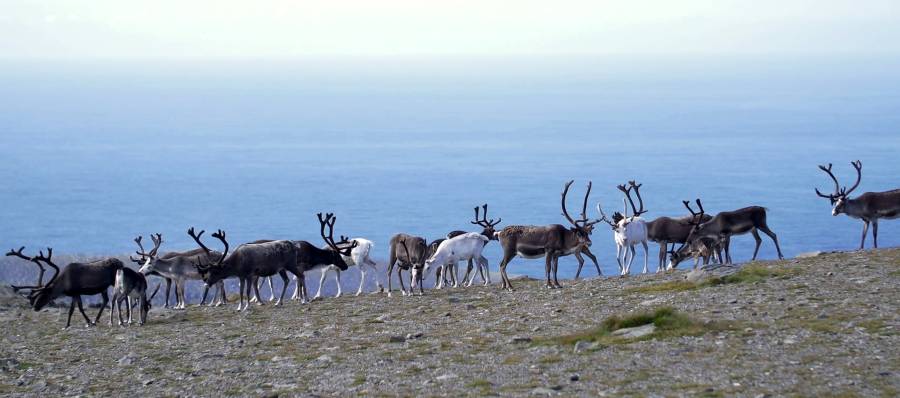
In the summer months, the Sámi keep their reindeer off the coast on the island of Arnoy. With the coming of Autumn, when the land will soon be covered in deep snow, the reindeer will not be able to reach the plants they need to survive. Consequently, three-to-four thousand reindeer start their migration with a two-and-a-half kilometre swim across the open fjord towards the mainland.
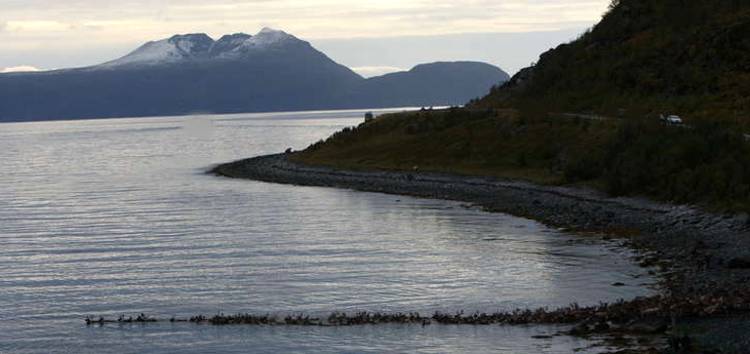
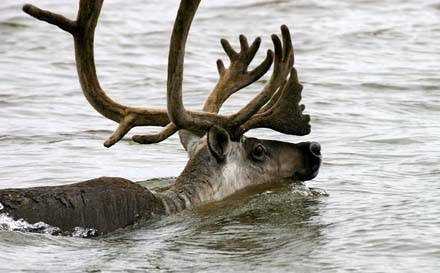
A powerful male will lead the way and the herd will follow.....
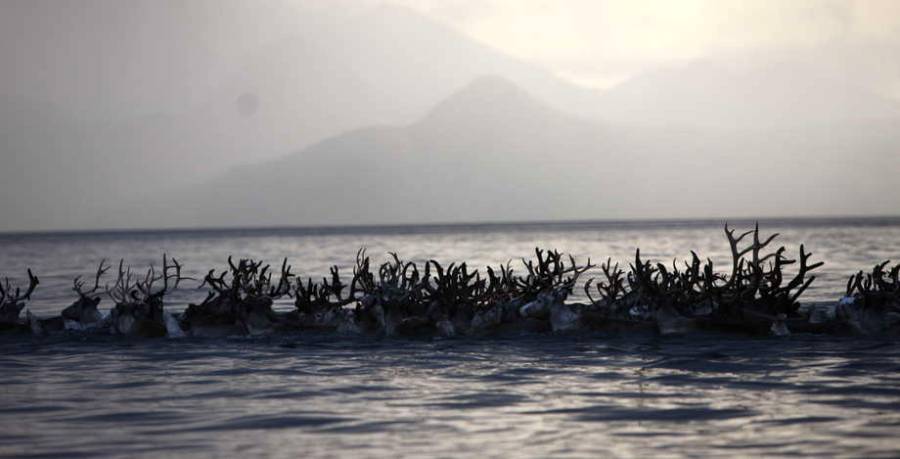
And hundreds of reindeer will power their way through the freezing waters of the fjord, the dark mountains rising in the distance.
The swim is exhausting for an adult reindeer, and absolutely gruelling for the calves of the herd, who are swimming for the first time. If just one calf panics and turns around, it can cause the whole group to retreat, wasting precious energy and time.
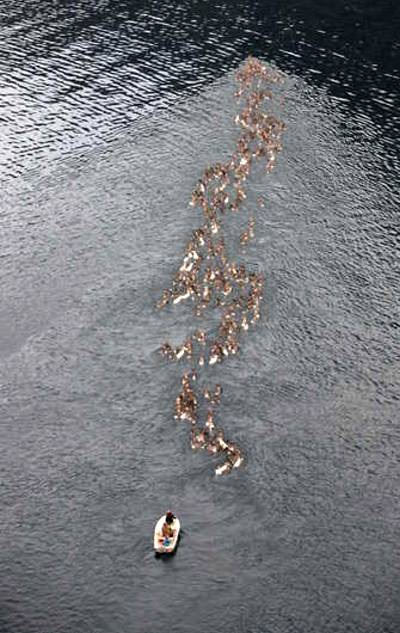
A boat keeps them moving forward, and as a calf attempts to quit, it's helped to join the rest of the group.
After swimming for over an hour, they arrive safely on the tundra plateau at the other side, and feast on lichen and regain their strength. The light snow cover on the tundra during the winter months means the moss on which the reindeer feed is relatively easy to find.
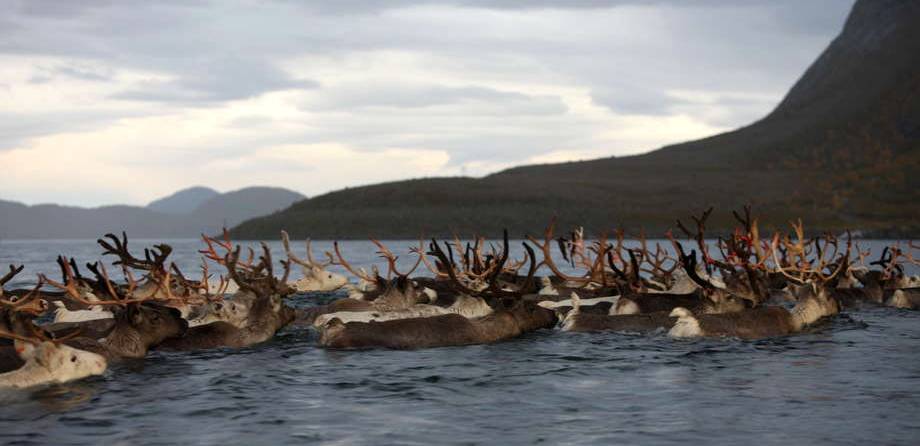
It can take a week for the entire herd to swim across the Kågsundet fjord, between the summer pastures of Arnøy island and the wintering grounds on the mainland.
The herd remains on the mainland until late April or early May, when the migration begins again in reverse, and the plateau’s vegetation is left to recover.
Once back on Arnøy island, the reindeer graze on fungi, leaves and grass.
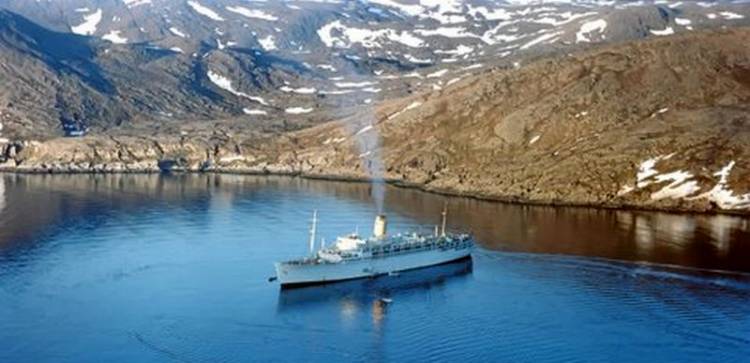
P&O's ss Chusan at North Cape in 1971
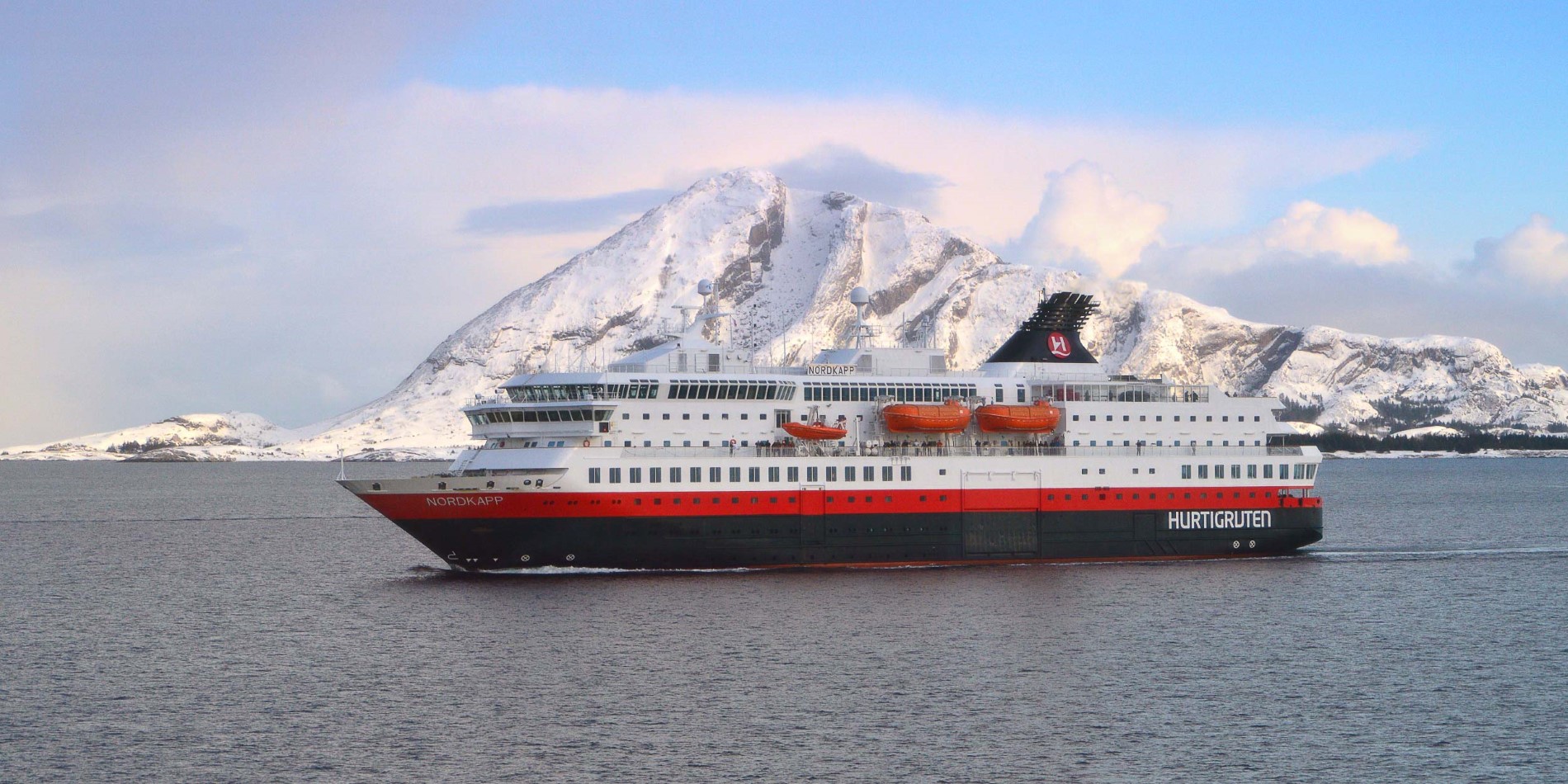
On a summer cruise, you might come across herds of grazing reindeer at this far-northern outpost at the top of Europe.
In winter, endless white plains and snow-capped mountains, dramatic weather and the Arctic´s special light.
The North Cape plateau soars 307 metres, almost vertically, above the Arctic Ocean.
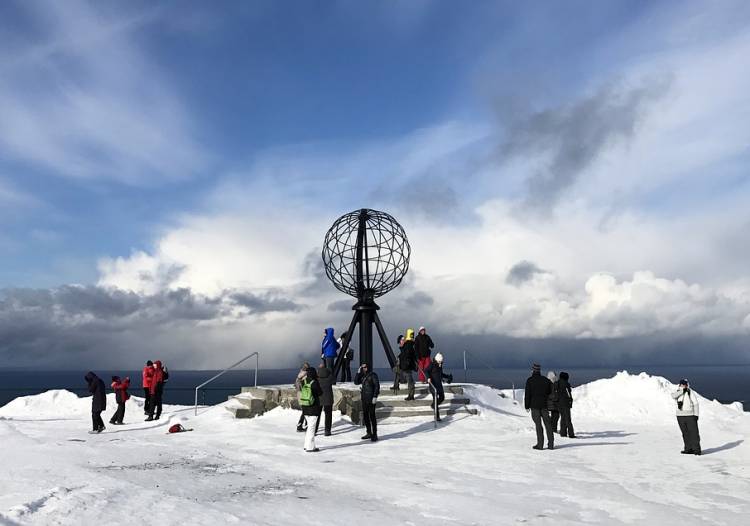
The iconic `globe´ sculpture has become the symbol of North Cape, and is a popular spot to get that all-important picture.
At North Cape Hall, built partially into the cliff, you can watch an impressive 180° panoramic film about the local Finnmark region and North Cape itself.
